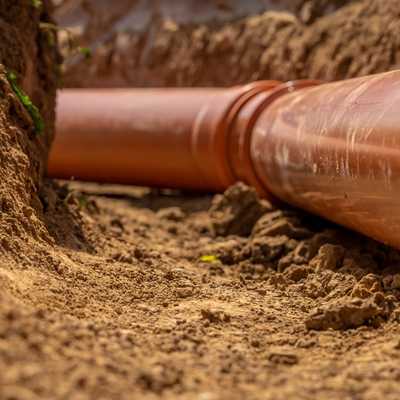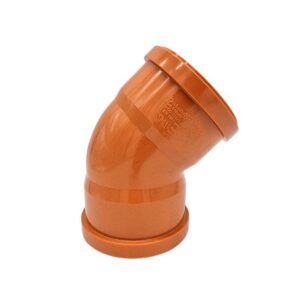What’s the Difference Between Foul Water Drainage and Surface Water Drainage?
Most properties generate two types of water that flow into the surrounding drainage systems. First, there’s foul water drainage, which includes waste from sinks, toilets, washing machines, and other appliances. This water is also sometimes called grey water. Then, there’s surface water, also known as stormwater, which is typically rainwater collected from gutters and channels around the house.
You might think both types of water are treated similarly in the drainage system, but that’s not the case. The rules for handling foul water and surface water are distinct, and understanding these differences is important.
In this article, we’ll delve deeper into the distinctions between foul water drainage and surface water drainage. We’ll cover how each type of water is defined, how they’re managed, relevant regulations, and potential issues that arise when these systems get mixed up.
Need Some Water Drainage Support?
Before we dive in, remember that we’re available for expert advice whenever you need it regarding your home’s drainage or water systems. Whether you’re unsure about which product to choose or need help troubleshooting during a project, feel free to reach out via phone, email, or our instant messaging service.
What Is Foul Water?
Foul water is highly contaminated and, according to government Building Regulations (Part H), it’s defined as:
- Waste from a toilet, bidet, or appliance used for washing items associated with foul waste.
- Water used for food preparation, cooking, or washing.
Foul water can come from a variety of household appliances, including:
- Toilets
- Sinks
- Baths
- Showers
- Washing machines
- Dishwashers
Given its potential contamination with effluents, chemicals, or other harmful substances, foul water is typically directed through the main sewer network to a sewage treatment plant. For homes not connected to the mains drainage, it’s discharged into a septic tank, private wastewater treatment facility, or a cesspit.
What Is Surface Water?
In this context, surface water generally refers to rainwater collected from rooftops or drains.
In rural areas, much of this rainwater naturally seeps into the ground. However, in urban areas, it’s usually collected by drains and directed into natural water bodies like rivers, streams, or even the ocean.
Since surface water isn’t used within a property, it’s not contaminated. This means it doesn’t require processing by treatment plants. Instead, it’s considered safe to direct back into soakaway drains and dispersed into the natural drainage system in the area.
Technical Terms and Names
The terminology used for the drainage pipes and pipework varies depending on their location. Pipes above ground are commonly referred to as 'sanitary pipework,' while everything below ground is called 'foul drains' or 'foul sewers.'
Don’t worry if you mix up terms like sanitary pipe or vent pipe with foul pipes—people won’t give you a strange look. It’s just good to know these terms if you’re reading through building regulations or related documentation.
Generally, a sewer pipe is terracotta-colored, whereas surface water or grey water pipes are often black (though they can be grey or white if above ground).
Rules and Regulations
As mentioned earlier, foul and surface water are addressed in Part H of the government’s Building Regulations. Section H1 focuses on foul water drainage, while Section H3 covers rainwater drainage. Because of its polluting nature, foul water drainage receives more stringent regulation compared to surface water drainage.
Building regulations outline a hierarchy for directing waste. Property owners should aim to connect their drainage to the first viable option from the following list:
- The public sewer
- A private sewer connected to a public sewer
- A septic tank or wastewater treatment plant on the premises
- A cesspit

Why Is It Important to Keep Foul Water and Surface Water Drainage Systems Separate?
Since surface water typically drains into rivers, streams, or other water bodies, it’s clear why contaminated water shouldn’t follow the same path. The consequences of contaminating a watercourse are severe, not only for the environment but also legally. A person or company found guilty of a pollution offense can face unlimited fines, and in extreme cases, imprisonment.
It’s not just pollutants entering surface water sewers that pose a problem. When surface water enters foul water systems, it can overwhelm the drainage and sewers, potentially causing dangerous floods. It can also create issues at sewage treatment facilities by overwhelming them and causing spills, which often results in untreated foul water being released into public waterways or the sea. Underground sewer pipes come in various sizes, with main pipes typically being 110mm and 160mm in diameter.
Why Do Surface and Foul Water Drainage Become Mixed?
Sometimes, foul water drainage and surface drainage systems become mixed unintentionally. Many older homes have combined foul and surface water underground drainage systems, meaning wastewater flows through the same pipes into the main sewer.
Building projects can also lead to mix-ups in foul and surface water sewers, often due to misconnections that send the wrong type of wastewater through the property’s drains.
If this happens in your property, don’t panic—you won’t have environmental health officers knocking on your door demanding access to your drain covers and inspection chambers! However, it might be worth investigating and fixing the issue if possible.
Foul Water Drainage Products
Now that we’ve covered the basics of foul and surface drainage, let’s take a closer look at the products we offer that could be useful if you’re planning to install or overhaul your drainage system.
Sanitary Pipework
Items such as bottle traps, waste traps, waste pipes, and overflow pipes make up the pipework that removes foul water from your home. Outside the property, this becomes a soil pipe stack that connects various outlets and directs the flow toward the sewer. A soil pipe stack consists of sections of soil pipe, junctions, and necessary fittings to secure them.
Building regulations also require that a soil stack be 'vented,' meaning any gases or odors generated must be able to escape somewhere clear of windows or doors. This is usually done through a dedicated vent pipe that extends above the roofline, covered with a protective cowl (typically at least 5 meters away from any windows or roofs).
Ultimately, the soil stack connects to the local main sewer (underground) drains, carrying sewage away from the site.
On-Site Sewage Treatment
About 4-5% of UK homes have off-mains drainage systems, meaning it’s either impossible or impractical to connect them to the main system. While 4-5% might not seem like a large percentage, it equates to around one million homes—and that doesn’t include rural businesses.
For homeowners in such situations, some form of on-site storage or treatment is essential. Septic tanks are a common solution, but an increasing number of larger properties are opting for their own sewage treatment plants, which function like smaller versions of the main system.
Drainage System Question? We’re Here to Help!
From pan connectors to sewage treatment plants and septic tanks, we understand waste water products inside out. If you need help selecting the right product for your project, feel free to contact us via phone, email, or our instant messenger service.
Feel free to reach out with any questions about our drainage systems range.
Author Bio
Nathan Wilde

Nathan has spent over 12 years in the drainage and plastics industry. With experience working for both builders’ merchants and major manufacturers, Nathan has built up a wealth of industry and product knowledge. At EasyMerchant, he’s dedicated to making life easier for tradespeople.
Â
Shop Drainage

110mm Drainage Pipe Fittings

110mm 3m Single Socket Underground Drainage Pipe
Pneumatic Toilet Tank is a high-tech toilet equipment that uses pneumatic technology to control flushing. Compared with traditional mechanical hidden water tanks, it has higher flexibility and reliability.
The pneumatic toilet cistern is mainly composed of a water tank, an air gauge, a cylinder, a water valve and buttons. When the button is pressed, the air gauge will automatically release the compressed air into the cylinder, push the water valve to open and release the water into the toilet basin. When the air in the barometer is completely released, the water valve will automatically close, stopping the inflow of water.
The advantages of the pneumatic toilet tanks include: the amount of flushing water can be adjusted freely, the flushing effect is better, the service life is long, it is easy to clean, and it is more water-saving. It can control the amount of flushing water by adjusting the air gauge, so as to adapt to different toilet basins and flushing requirements. In addition, the pneumatic hidden water tank does not require any buttons or handles to be touched by hand, which also makes it more hygienic.
Pneumatic Toilet Tank, Pneumatic Cistern Flush, Sensor Toilet Tank, Automatic Flushing Cistern
Guangdong Fabia Intelligent Technology Co., Ltd , https://www.smartfabiatoilet.com